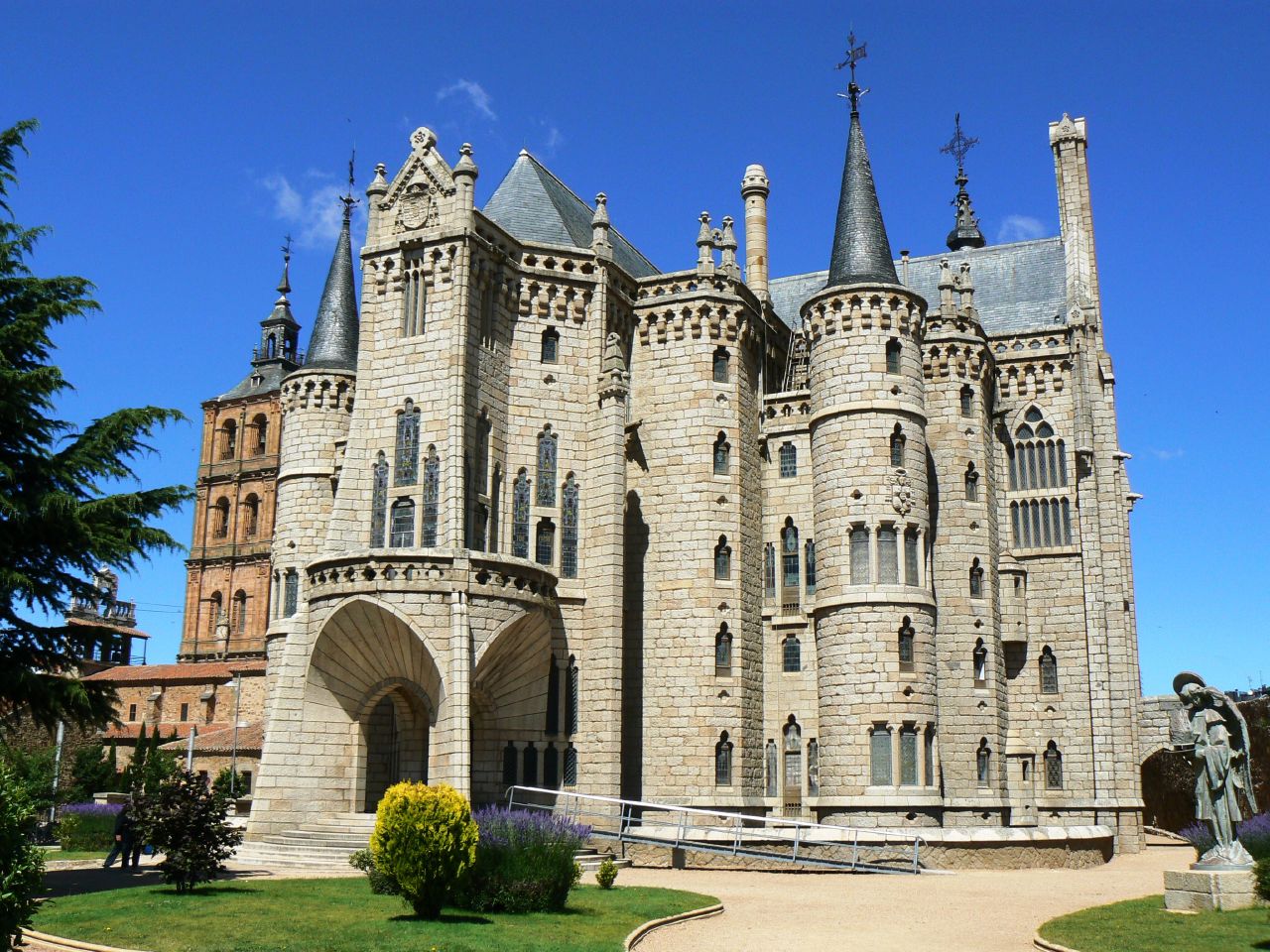Palacio Episcopal de Astorga by Antoni Gaudí in Astorga (Spain)
Building name: Palacio Episcopal de Astorga
Year: 1899 - 1915
Architect: Antoni Gaudí
City: Astorga
( Spain)
Spain)
The Episcopal Palace of Astorga, located in the town of Astorga in the province of León, Spain, is a stunning example of Modernist architecture. Designed by the renowned Catalan architect Antoni Gaudí, the palace is a unique and striking building that stands out amidst the historic surroundings of Astorga. Here are some key details about the architecture of the Episcopal Palace of Astorga:
Architectural Style
The Episcopal Palace of Astorga showcases the distinctive style of Antoni Gaudí, known for his innovative and organic forms. The building is often classified as Modernist, but it also incorporates elements of Art Nouveau and neo-Gothic styles.
Neo-Gothic Facade
The most prominent feature of the palace is its neo-Gothic facade, which pays homage to the historic architecture of the region. Gaudí drew inspiration from the medieval cathedrals of Spain, incorporating pointed arches, intricate tracery, and ornamental details typical of the Gothic style.
Modernist Elements
While the facade reflects neo-Gothic influences, the overall design of the palace is characterized by Modernist principles. Gaudí introduced elements of organic shapes, curvilinear forms, and asymmetrical compositions, breaking away from the rigid symmetry of traditional architecture.
Materials
The palace is constructed primarily of stone and brick, typical of the regional architecture of Astorga. Gaudí combined these traditional materials with modern techniques and innovative approaches to create a visually striking and structurally sound building.
Towers and Turrets:
One of the most notable features of the Episcopal Palace is its towers and turrets, which rise dramatically from the facade. These elements, adorned with intricate details and decorative motifs, add a sense of grandeur and verticality to the building.
Mosaic Work
As with many of Gaudí's works, the Episcopal Palace of Astorga features colorful mosaic work. The facade is adorned with ceramic tiles in various shades of blue, green, and white, creating a vibrant and lively exterior.
Interior Design
While the exterior of the palace is impressive, the interior is equally noteworthy. Gaudí paid careful attention to every detail of the interior design, incorporating elements such as stained glass windows, ornamental ironwork, and decorative ceilings.
Function and Purpose of building
The Episcopal Palace of Astorga was commissioned by the bishop of Astorga, Joan Baptista Grau i Vallespinós, as a residence and administrative center. It was intended to serve as both a residence for the bishop and a venue for official functions and events.
Symbolism and Meaning
As with many of Gaudí's works, the Episcopal Palace of Astorga is rich in symbolism and meaning. The design elements, colors, and motifs used throughout the building often have religious or cultural significance, reflecting the bishop's role and the history of the region.
Restoration and Preservation
Over the years, the Episcopal Palace has undergone various restoration efforts to preserve its architectural integrity. Today, it stands as a testament to Gaudí's genius and a beloved landmark in Astorga.
The Episcopal Palace of Astorga is a remarkable architectural gem that combines elements of neo-Gothic, Modernist, and Art Nouveau styles. Designed by Antoni Gaudí, the palace is a masterful blend of traditional materials and innovative forms, creating a building that is both visually striking and deeply meaningful. Its towers, turrets, colorful mosaics, and intricate details make it a must-see attraction for visitors to Astorga, offering a glimpse into the creative genius of one of Spain's most celebrated architects.
Visits of Palacio Episcopal de Astorga
 | Plaza de Eduardo Castro, 15
24700 Astorga |
 | +34 987 61 68 82 |
 | https://www.palaciodegaudi.es |

